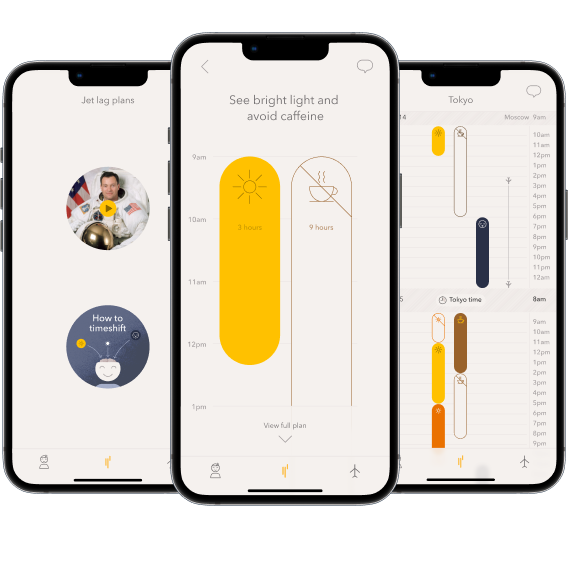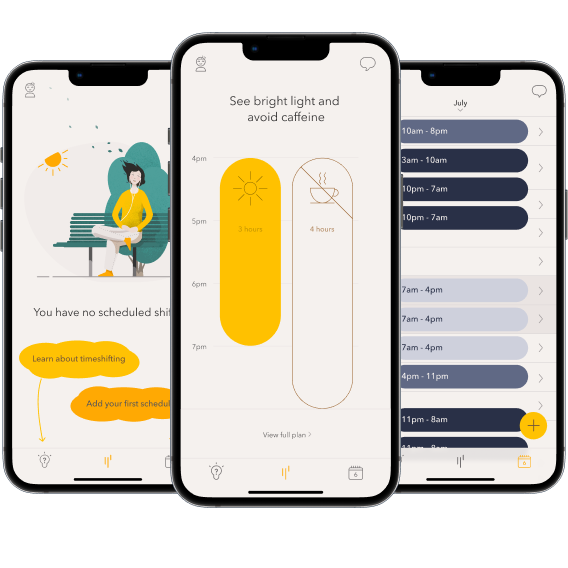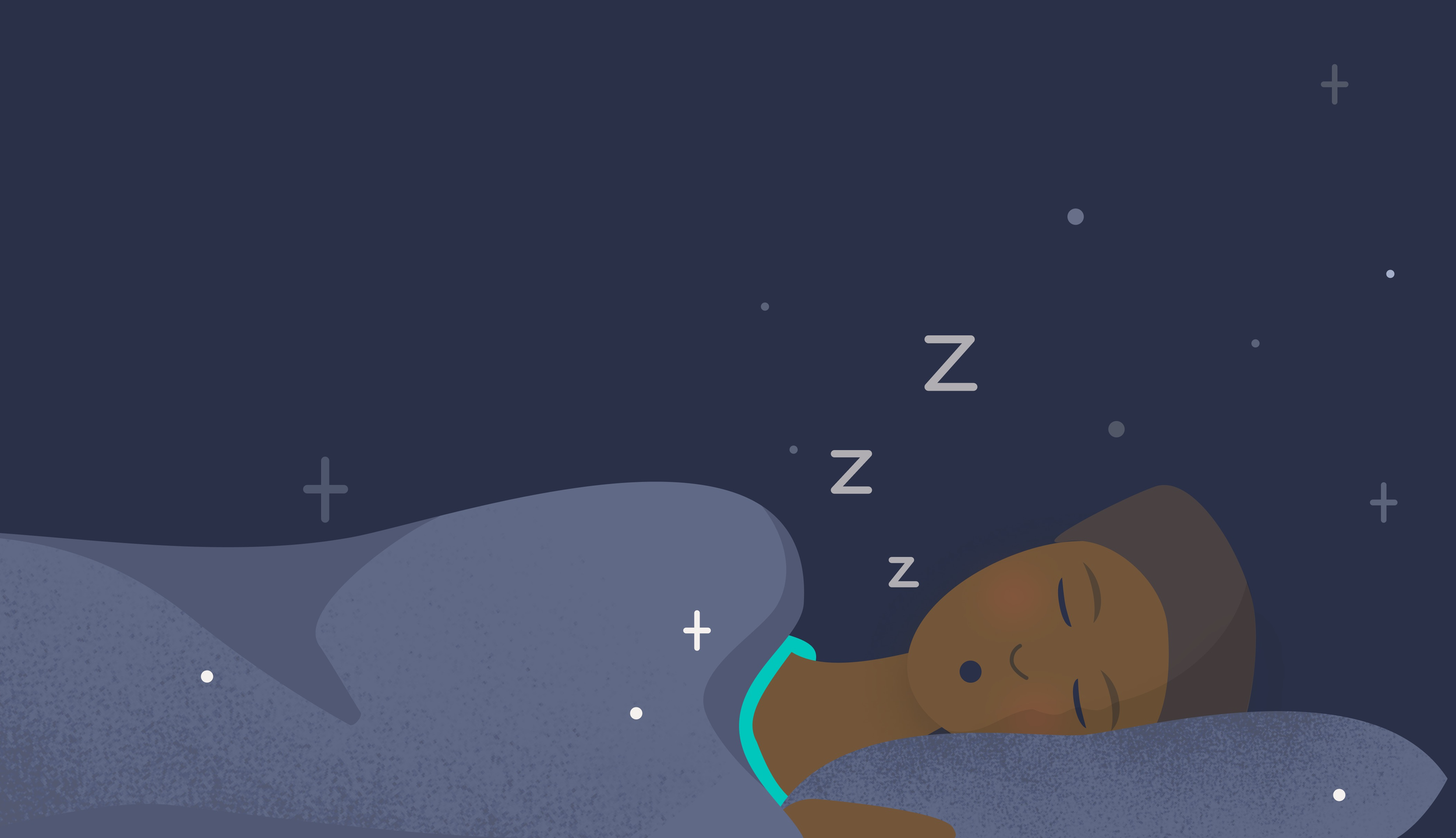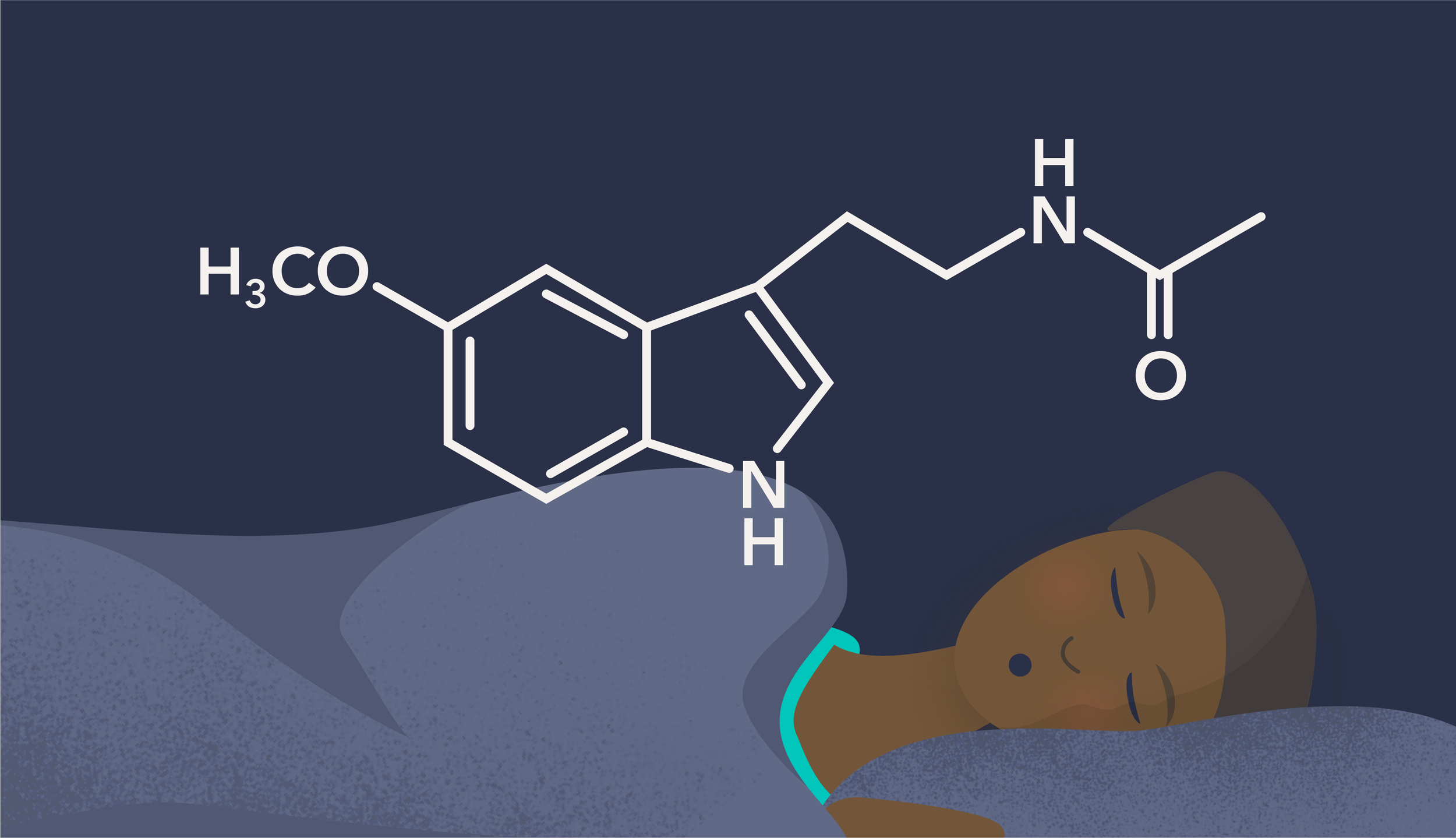Tips for better sleep and circadian management
The sleep economy alone has already reached $500 billion, but we’re still not sleeping well or performing at our best! Why? Because our modern lives and generic sleep solutions defy the basic facts of circadian biology.
So, instead of only listing sleep tips, we’re also including important circadian tips. These should be your foundation since your circadian clock regulates your sleep and almost every other biological system in your body.
Sleep tips
Most people do not sleep enough. The recommended minimum for adults is 7 hours per night, each and every night. Many people need more but hardly anyone needs less. You need to try to sleep for longer than you need as you don’t sleep the entire time that you are in bed. This is called sleep efficiency. Sleep efficiency is calculated by dividing the number of hours of sleep by the time you are in bed trying to sleep and you should be aiming for more than 90% – sleeping at least 90% of the time in bed. For example, in order to sleep 7 hours with a sleep efficiency of 95%, you need to try to sleep for 7 hours and 22 mins. Many people do not have such a high sleep efficiency and so you will need a longer sleep opportunity, ideally 7.5-8 hours or more. Schedule this time for sleep and make sure you prioritize it over other activities.
There are two ways to tell if you are not getting enough sleep. The first is if you need an alarm clock (or several) to wake you up. You should be going to bed early enough to wake up naturally. Try going to bed earlier until you wake up before the alarm clock goes off. Even if you use an alarm clock, don’t use the snooze button – set it as late as you can so you get up as soon as it goes off. Snoozing just means you get less good quality sleep.
The second is to think about how quickly you would fall asleep in the daytime in a dark, cool, quiet and comfortable bed. If you can fall asleep in less than 10 minutes, you are definitely not getting enough sleep. If you can fall asleep in 5 minutes in the daytime, you are at a potentially dangerous level of sleepiness and should be concerned about drowsy driving, making mistakes at work or even your risk of accidents and injuries. Many people say ‘I don’t have a sleep problem, I can sleep anywhere or anytime’. This is not good and indicates that you are chronically sleep-deprived. You should not be able to sleep easily in the daytime if you are getting enough sleep at night and so if you can fall asleep at any time, you are at a dangerous level of sleepiness.
Keep your bedroom dark, quiet, and cool (between 60 and 67 degrees). Use blackout curtains, an eye mask and earplugs to reduce disturbances due to light or noise. White noise, from machines or online tracks, can be useful but set them to turn off about 30 minutes trying to sleep so they don’t go on through the night and affect your depth of sleep.
Use caffeine ‘little and often’ if you need to (half a cup of tea or coffee, or normal soda every 2 hours) but no caffeine 9 hours before you go to sleep. Giving up caffeine completely will ultimately make you more alert but you may experience side effects due to withdrawal for a few days after stopping. Once you break the caffeine cycle (use caffeine, sleep poorly and feel tired, so use more caffeine, sleep even more poorly and feel more tired etc etc), however, you will sleep better, and be more alert in the day.
Your bed is for sleep and sex only — no work, no TVs, no phones, no laptops. The light from these devices is highly alerting and not only make it harder to fall asleep but also reduce the depth and quality of sleep even after the lights are turned off, making you feel less well recovered in the morning.
Take a warm shower or bath before bed to ensure that you can lose heat, a necessary part of the sleep initiation process. Being too warm or too cold can prevent you from losing heat – setting the room a little cooler and then using blankets to regulate temperature is the easiest approach.
Do some light stretching, deep breathing, yoga, or meditation to help your body and your mind transition to sleep. Having a gap between your daytime activities or work and sleep is necessary to help you wind down. Set time aside to do something relaxing, for example reading a book using a dim bedside lamp or a lamp fitted with a ‘sleep-promoting’ lamp (it should be dim and a red-orange color). Do not use eReaders or an iPad to read before bed. Sleep in darkness, or with an eye mask. If you have to get up in the night, try and avoid turning on the lights or use the dimmest, reddest night light you can find. Men should go to the toilet sitting down to avoid putting on the light. There is often enough light pollution to see to get to the bathroom and back.
Ease yourself into sleep mode by drinking a non-caffeinated hot drink, for example warm milk, or chamomile or lavender tea.
Before bed, write a list of what you are grateful for. It’s a great way to make round out the day and put yourself in a good state of mind. Earlier in the evening, write down tomorrow’s tasks so you don’t lie in bed thinking about them when trying to sleep. Place a notepad on your bedside table in case you need to remember something.
Circadian tips
The circadian clock craves consistency, particularly in your light-dark cycle. Wake occurs in light and sleep occurs in the dark, so keeping consistent bedtime and wakeup times every day is a great way to ensure your clock receives a stable light-dark cycle. Changing your light-dark cycle has the same biological effects as jet lag -- staying up 3 hours later at the weekend is like flying 3 time zones west, even if you don’t physically travel. This “social jet lag” can make it hard to maintain good sleep and good daytime performance, especially on a Monday morning, so try and plan your sleep at the same time every night. If you do stay up late on a Friday or Saturday night, go to bed earlier than normal on Sunday, and avoid light (wear sunglasses) and use a ‘sleep-promoting’ light in the 2-3 hours before bed. Melatonin (1-3 mg, fast-release, without any other compounds) may help you fall asleep earlier and shift your clock back to normal. When you wake, see as much bright light as possible, especially daylight, for the entire morning to help shift the clock earlier. If you have to be indoors, intermittent light exposure (short breaks or ‘light showers’ outside) or bright, blue-enriched, ‘cool-looking’, ‘alertness stimulating’ lights (high correlated color temperature [CCT] lamps at 5000K or higher – you can find them in your local home store) will still be helpful. Repeat for 1-2 days.
Get bright light — preferably sunlight — all day from when you wake until about 3 hours before bed. Open the curtains, even if a cloudy day, and get outside if you can. If you have to be indoors, intermittent light exposure (short breaks or ‘light showers’ outside) or bright, blue-enriched, ‘cool-looking’, ‘alertness stimulating’ lights (high correlated color temperature [CCT] lamps at 5000K or higher – you can find them in your local home store) will still be helpful.
For as long as possible before bed – ideally 3 hours – dim the lights as low as practical and ideally use a sleep-promoting lamp in your table lamps. An easy way to provide good lighting to your clock is to fit two different types of light bulbs in different circuits. For example, for the daytime, put bright, blue-enriched ‘cool-looking’ ‘alertness-promoting’ white light (high correlated color temperature [CCT] lamps at 5000K or higher – you can find them in your local home store) in your ceiling. In the evening, use a dim, blue-depleted ‘warm-looking’ white light (CCT <3000K) or sleep-promoting light in your table lamp, bedside lamp or vanity lighting for as long as you can before sleep. There are programmable lamps that will do this automatically if you want to use them but this simple solution is inexpensive and effective.
Don’t use any electronic devices for as long as possible before bedtime — ideally 3 hours but if you can’t manage that, as long as possible. The blue-enriched light emitted by electronic devices tell your brain that it’s still daytime and suppress your body’s natural melatonin production and alert the brain making it harder to fall asleep, and reducing your sleep depth and quality for several hours after you turn the lights off.
Focus on the circadian misalignment instead of just sleep when you cross time zones or work shifts (Timeshifter can help with both).
Other articles
Jet lag is history.
Timeshifter's jet lag app is the most-downloaded and highest-rated jet lag app in the world. Get personalized jet lag plans based on your sleep pattern, chronotype, itinerary, and personal preferences.

App for shift workers
Timeshifter's shift work app is an entirely new way for shift workers to optimize their sleep, alertness, and quality of life. Import your work schedule to get highly personalized advice.








